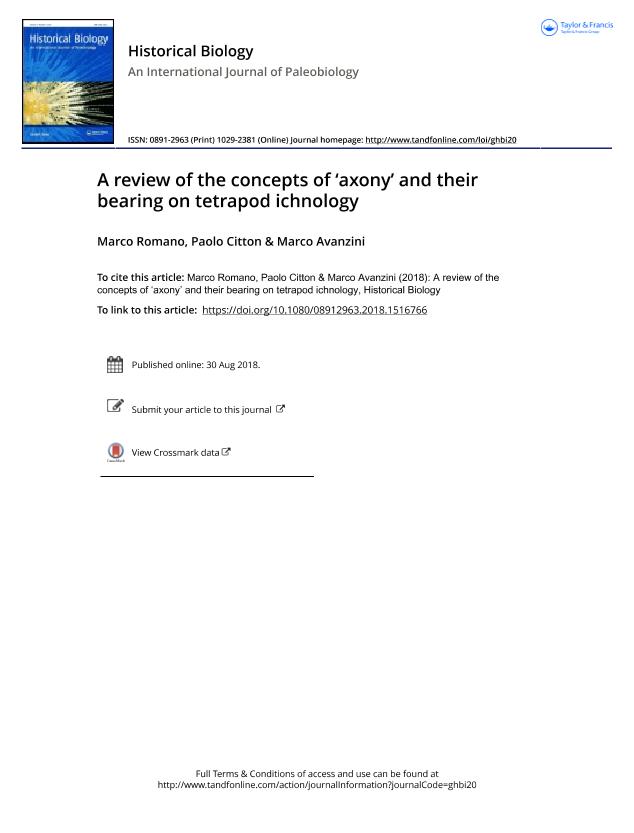Artículo
A review of the concepts of ‘axony’ and their bearing on tetrapod ichnology
Fecha de publicación:
08/2018
Editorial:
Taylor & Francis
Revista:
Historical Biology
ISSN:
0891-2963
e-ISSN:
1029-2381
Idioma:
Inglés
Tipo de recurso:
Artículo publicado
Clasificación temática:
Resumen
Two meanings of the term axony are found in the ichnological literature. Multiple meanings may prove to be a double-edge sword, complicating scientific communication. In vertebrate ichnology the first meaning of axony relies on aspects of locomotion related to the body weight support and propulsive thrust. A second one concerns axony as a purely geometric and dimensional descriptor. These approaches are based on a static view of the impression process, implying the loss of much important information. Here we report an analysis of shallowly impressed footprints referred to the ichnotaxa Ichniotherium sphaerodactylum and Dimetropus osageorum. The analysis was carried out by considering the track registration as a dynamic process and attempting to identify and describe axony conditions during movements. Variations in the axony conditions can be understood in the light of the producer’s foot anatomy and the reciprocal relations between foot bone elements. The concept of axony can be a useful tool in ichnological practice only when it is related to the complex dynamic of locomotion and the resulting track registration. It can help in restoring the interconnections between track and trackmaker, re-establishing the biological significance of tetrapod footprints.
Palabras clave:
DIMETROPUS
,
FOOTPRINT
,
ICHNIOTHERIUM
,
ICHNOLOGY
,
LOCOMOTION
,
TETRAPODS
Archivos asociados
Licencia
Identificadores
Colecciones
Articulos(IIPG)
Articulos de INSTITUTO DE INVESTIGACION EN PALEOBIOLOGIA Y GEOLOGIA
Articulos de INSTITUTO DE INVESTIGACION EN PALEOBIOLOGIA Y GEOLOGIA
Citación
Romano, Marco; Citton, Paolo; A review of the concepts of ‘axony’ and their bearing on tetrapod ichnology; Taylor & Francis; Historical Biology; 8-2018; 1-9
Compartir
Altmétricas




